Low-maintenance gardening tips from Leanne Cusack's garden
You could call our garden an “all you can eat” buffet for the pollinators.
There are so many birds, butterflies (yes, Monarchs), hummingbirds and bees flying overhead there’s almost a need for air traffic control!
That buzz feels like gratitude from nature.
While those bees are busy, we, as gardeners, want to be a bit lazy.
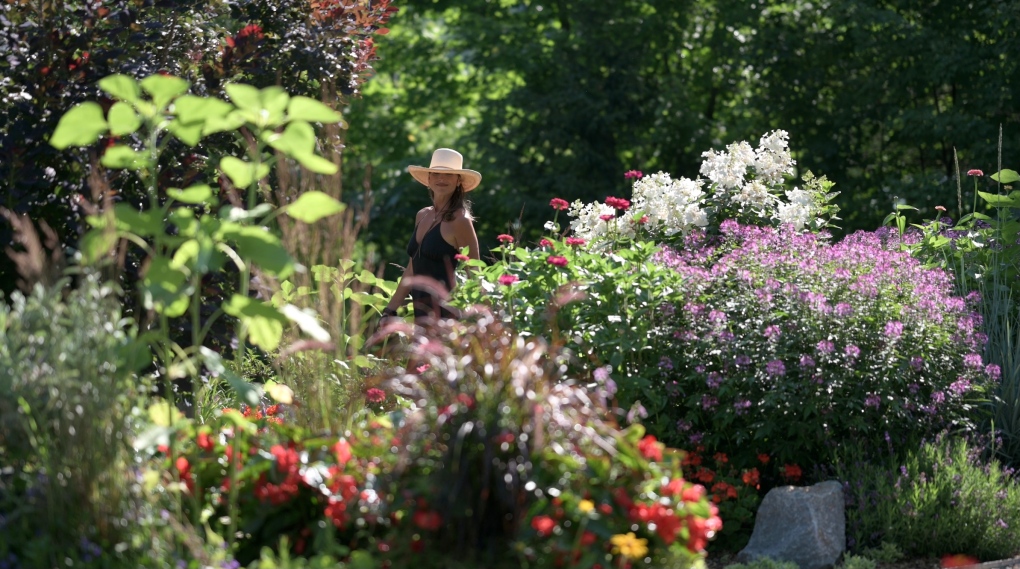 CTV Ottawa host, Leanne Cusack shares her Chelsea, Que. garden, highlighting low-maintenance & affordable tips. (photo credit: Joel Haslam / CTV News Ottawa)
CTV Ottawa host, Leanne Cusack shares her Chelsea, Que. garden, highlighting low-maintenance & affordable tips. (photo credit: Joel Haslam / CTV News Ottawa)
CTV Ottawa host, Leanne Cusack shares her Chelsea, Que. garden, highlighting low-maintenance & affordable tips. (Photo credit: Joel Haslam)
We have a digging, dividing, mulching and planting ‘marathon’ at the beginning of the season for about four days—long days.
And then we are done! (We can play on the water, or hike, until we tuck the gardens in for the winter.)
Sure there’s a bit of weeding, watering and deadheading but overall, the garden takes care of itself.
The secret is in the mulch.
CTV News Ottawa’s Joel Haslam is more than a great storyteller.
I call my darling partner of eight years: “The King of Mulch”.
I also call him the “King of Chicken Manure”. He’s not crazy about either moniker but he likes how the mulch (Ramea or willow bark) maintains the moisture in the soil and minimizes the need to weed, and how the manure is like steroids for plants.
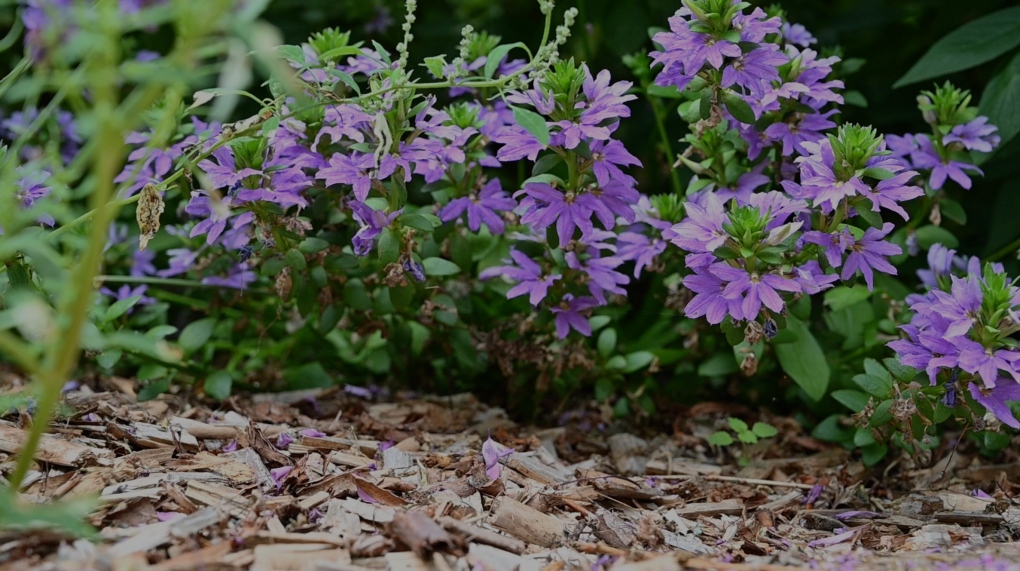 Mulch (Ramea or willow bark) maintains the moisture in the soil and minimizes the need to weed. (Photo: Joel Haslam / CTV News Ottawa)
Mulch (Ramea or willow bark) maintains the moisture in the soil and minimizes the need to weed. (Photo: Joel Haslam / CTV News Ottawa)
Both the mulch and the manure are healthy options for the soil—chemical and dye free. That way herbs and vegetables can eventually be planted where the flowers are now.
One thing I am big on is something I will call “appreciative relocation of volunteers”.
Instead of being frustrated by the wonderful wildlife, welcome the ‘volunteer plantings’ of the birds and chipmunks.
For years, I would plant sunflowers and I felt a bit sabotaged by the creatures I would lovingly feed all winter. I’d plant seeds, they’d dig them up and eat them. It was like a treasure hunt and I was left empty-handed.
I then realized they were planting too. Helping me, even if unintentionally.
So when I see a sunflower spring up anywhere, I let it get strong enough to transplant and relocate it where I would like it to grow to full height.
Working with the wildlife is a numbers game. I cannot predict how many seeds planted in beds will take, so I also start sunflowers in pots.
I then move these sunflower seedlings into large containers,
They add height and drama to the garden.
It has been such an incredible growing year, so many are giant bright and sunny sunflowers at 12-feet tall.
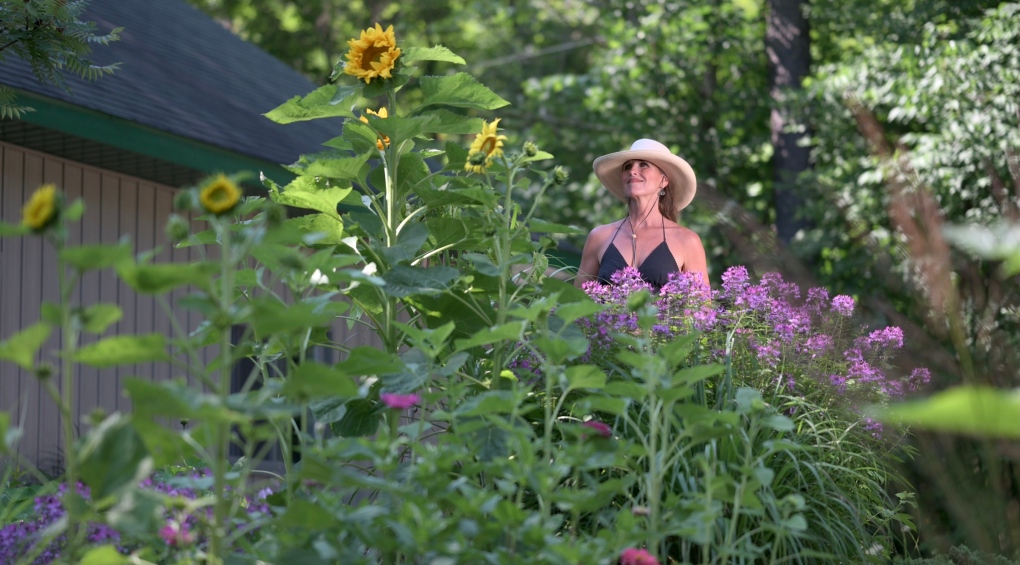 Sunflowers. (Photo: Joel Haslam / CTV News Ottawa)
Sunflowers. (Photo: Joel Haslam / CTV News Ottawa)
You know that expression “stay in the light”; sunflowers are the teachers.
Young sunflowers follow the sun, hence the French word for sunflower: Tournesol-meaning ‘turns with the sun’.
These tall, bright and handsome flowers add so much to the garden for just a few cents worth of seeds.
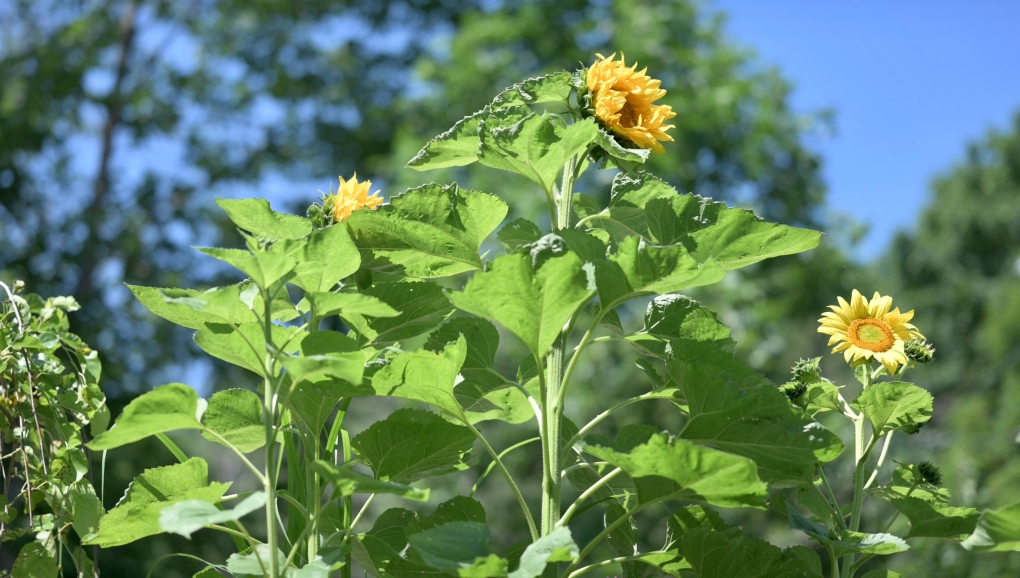 Sunflowers. (Photo: Joel Haslam / CTV News Ottawa )
Sunflowers. (Photo: Joel Haslam / CTV News Ottawa )
Those mature sunflowers are then bird feeders and the collaborative cycle continues.
Another happy plant offering big bang for about two bucks—the nasturtium! (Two bucks is the cost of a package of seeds.)
If you are drawn to the cheerful and exotic looking flowers surrounded by such pretty leaves, I suggest planting them in containers and in beds.
I plant them everywhere.
They are beautiful draped over garden walls. I put nasturtiums in the containers with sunflowers. It’s my way of bringing the south of France to the Gatineau Hills.
These vibrant plants are great ground cover. The vibrant flowers are perfect for garnishing salads or desserts. Yes, they are edible!
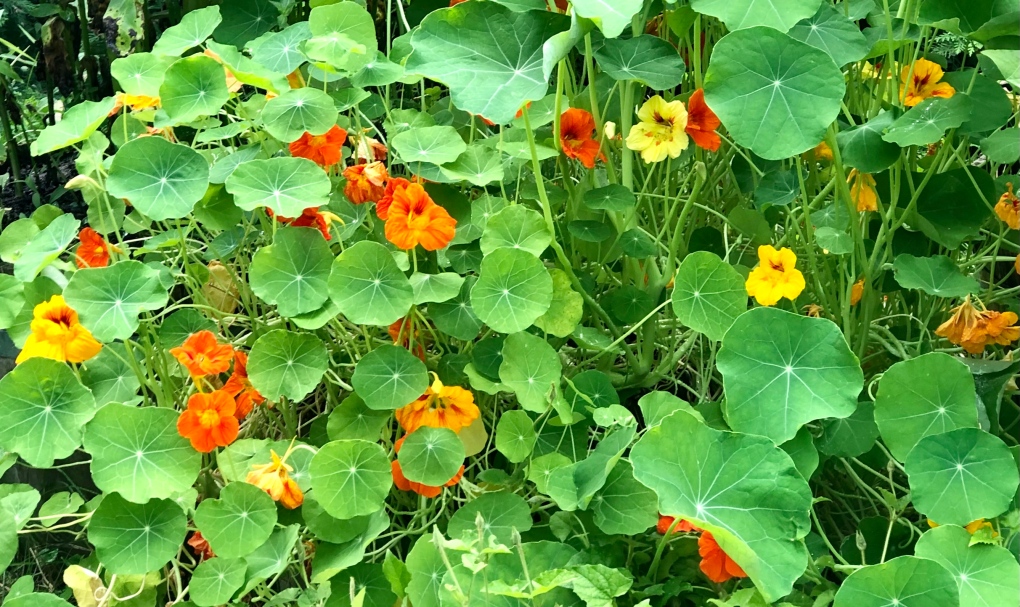 Nasturtium (Photo credit: Joel Haslam)
Nasturtium (Photo credit: Joel Haslam)
Another sunny flower friend is a gal named Susan, some say her eyes are brown, some say they are black. Brown, or Black-eyed Susans are low-maintenance and so darn happy.
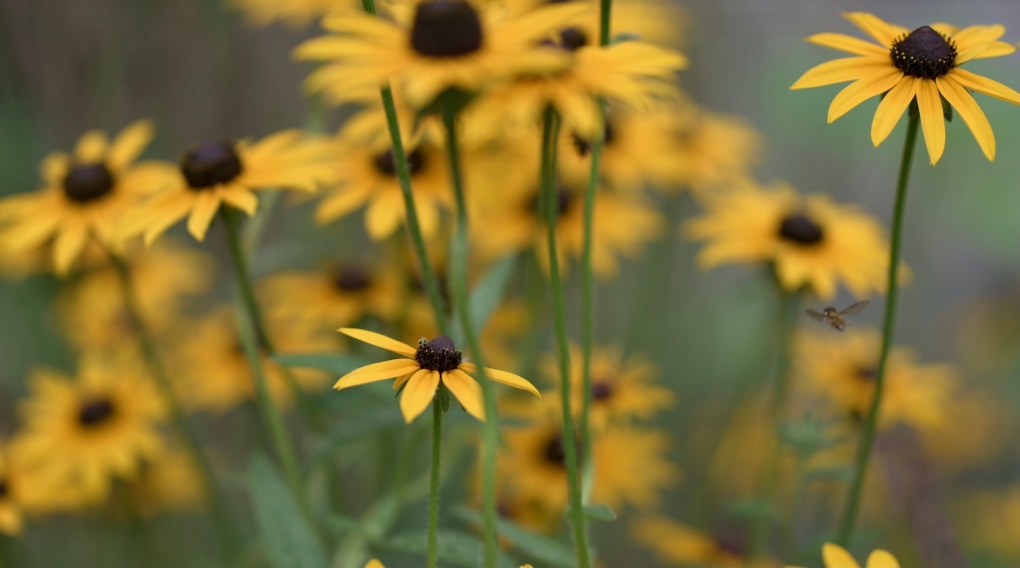 Brown-eyed Susans (Photo: Joel Haslam / CTV News Ottawa)
Brown-eyed Susans (Photo: Joel Haslam / CTV News Ottawa)
Brown-eyed Susans (Rudebeckia) are also resilient.
When I noticed the flower had prolifically self-seeded in our flagstone path there were two options: A) the whipper-snipper or B) spending ten minutes moving dozens and dozens of little volunteer seedlings into beds and containers.
I chose option B and feel rewarded.
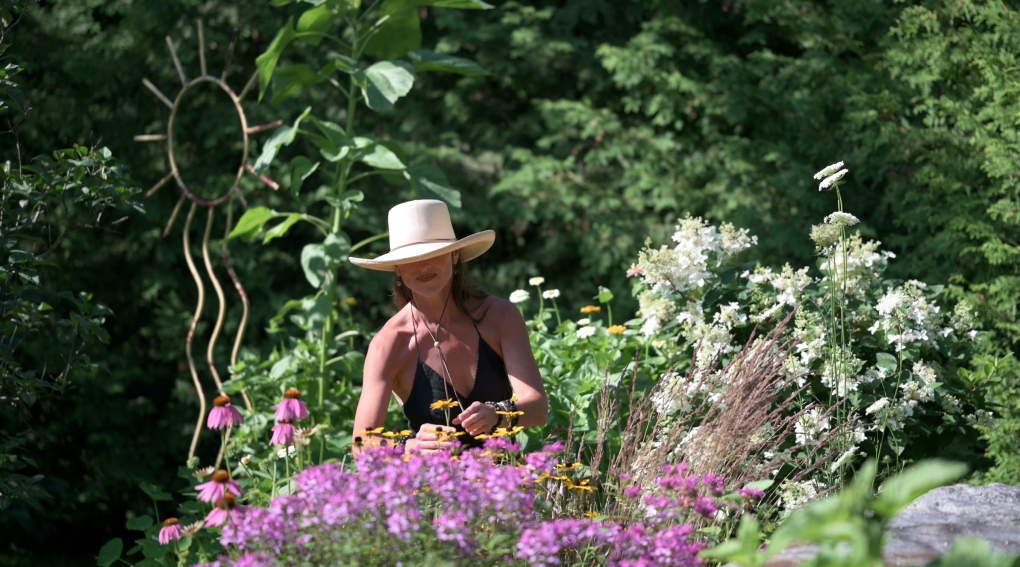 Relocating Black-eyed Susan volunteer seedlings. (Photo credit: Joel Haslam / CTV News Ottawa)
Relocating Black-eyed Susan volunteer seedlings. (Photo credit: Joel Haslam / CTV News Ottawa)
Relocating Black-eyed Susan volunteer seedlings. (Photo credit: Joel Haslam)
Since we are speaking of resilience, I want to tell you about a plant that just keeps on giving.
It’s an annual called Mezoo, or Dorotheanthus. It’s a tender perennial in the Carolina’s and more temperate climates.
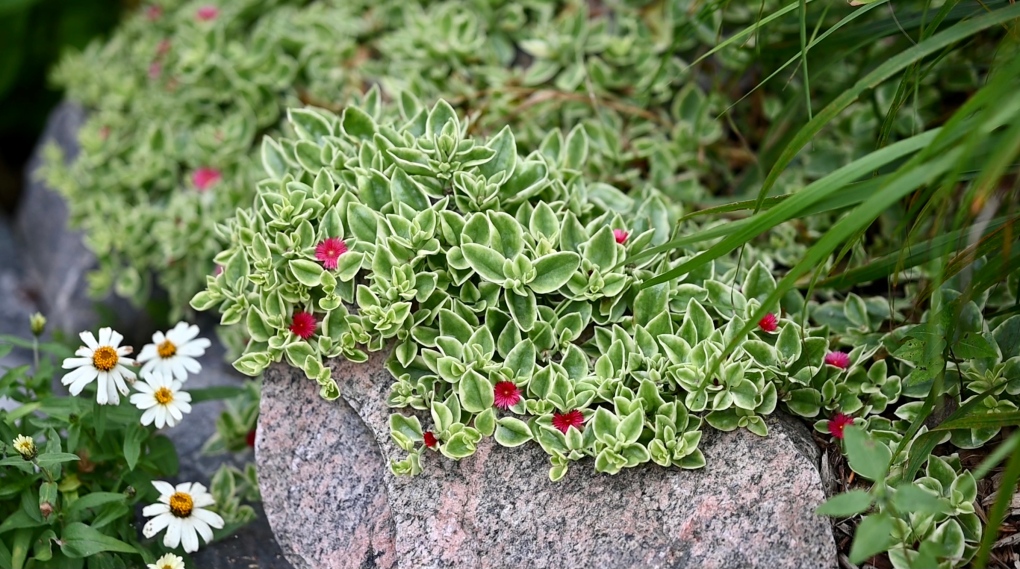 Mezoo or Dorotheanthus (Photo: Joel Haslam / CTV News Ottawa)
Mezoo or Dorotheanthus (Photo: Joel Haslam / CTV News Ottawa)
This year, I met my new best girlfriend Dorotheanthus quite accidentally.
When I went to Brantim Country Garden Centre on the Upper Dwyer Hill Road to buy my “annual” annuals, I asked for Swedish Ivy (a long time go-to vine for containers).
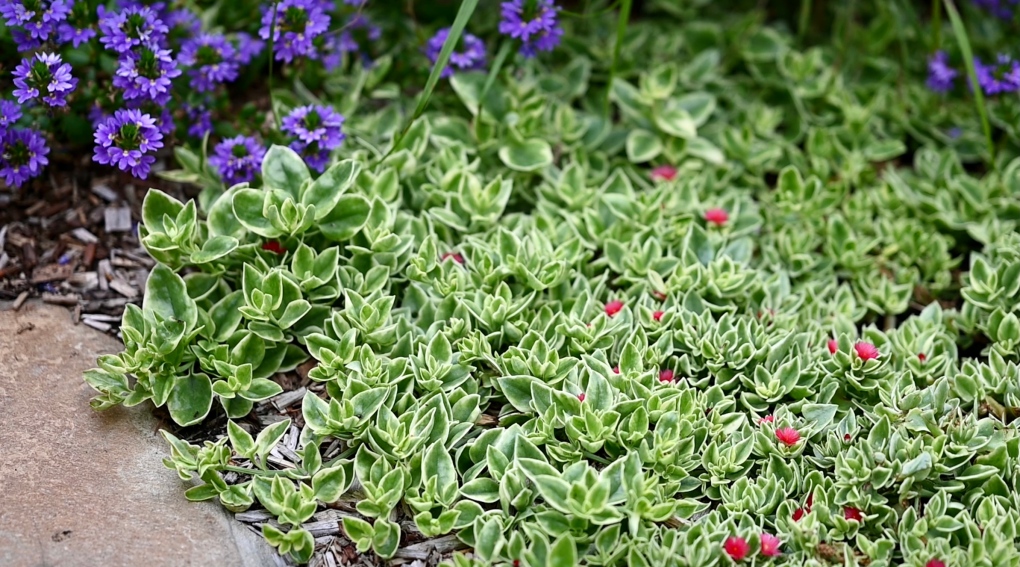 Dorotheanthus (Photo: Joel Haslam / CTV News Ottawa)
Dorotheanthus (Photo: Joel Haslam / CTV News Ottawa)
Joanne Smith, the creative genius there said, “Lee, sorry sold-out but try this Mezoo vine, I know you will love it.”
She was right. It is the best and I have sold everyone on it.
When I told Jocelyn, the amazing horticulturalist at Masham’s ‘find of a nursery’ Les Serres Bourgeon, she said, “you know that’s a succulent, right?! Just break a piece off and stick in the soil.”
That little conversation means I have Doreanthus everywhere—on paths, in containers, draping over rocks. It has the sweetest little reddish-pink fringy flowers too. I plan to take a few plants inside to overwinter.
Savings tip: One succulent becomes many, many plants!!
Mezoo or Dorotheanthus is my favourite addition this year. It’s an annual but I will bring a few pieces inside to overwinter.
If we focus on garden 'division that becomes multiplication’, let’s shine a light on the bright and beautiful hosta.
Hostas are the plant-world’s version of the perfect friend.
They are reliable, hardy, happy, forgiving, cheerful and versatile.
Everyone loves to share their hostas. I have gratefully used some of the hostas I have been gifted in containers.
I really like how they look at varying heights in containers.
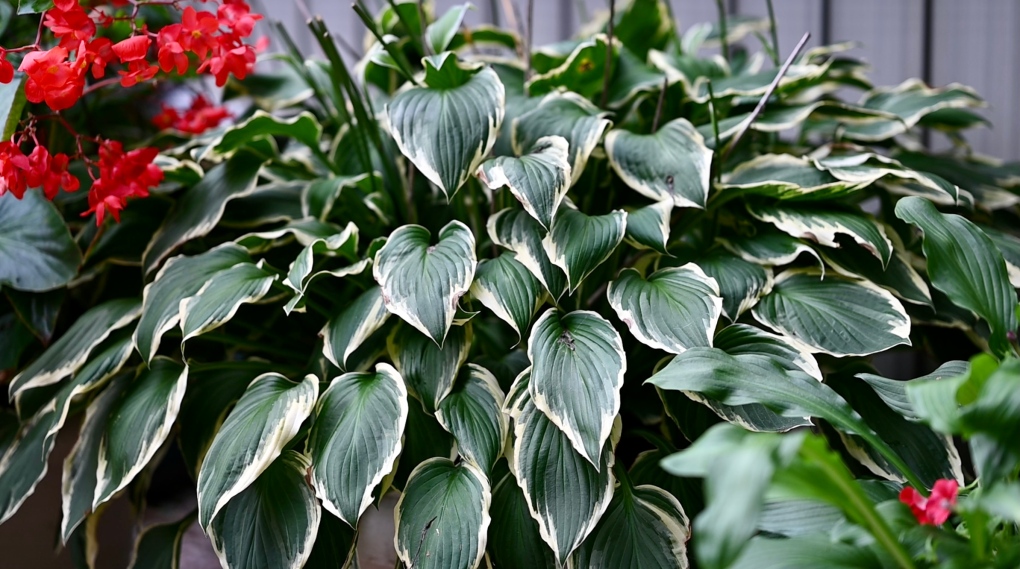 Hostas in pots. (Photo: Joel Haslam / CTV News Ottawa)
Hostas in pots. (Photo: Joel Haslam / CTV News Ottawa)
My tip, learned quite accidentally; if you dump your hostas out of the containers in the forest, or at the back of your garden in the fall, you can pop them back into the container (with added soil) in the spring.
I have been putting the same hostas in the same containers near the garage for years now. (They are heavy as heck, so thank you, Joel.)
Grasses (even a piece of your perennial ornamental grasses) and begonias added to these hostas (divided and subdivided) are showstoppers.
I feel so fortunate to have discovered this trick. Try it with one small one to see if it works for you.
Tip: I dump hostas from containers in the forest in the fall and plant them again in the same containers in the spring. I may be President of the Hosta Fan Club. )
Early in this article I celebrated Susan. She’s a versatile one, that Susan. I not only enjoy her in her daisy form, she is a beauty as a vine as well. Thunbergia, Black-eyed Susan Climbing Vine is a great climber (as per her name). This plant is gorgeous in a container or growing, and flowing over a rock wall. The seed pack costs $1.89. I have clumps of this plant everywhere. Susan is a very affordable friend in my garden for about $8.00.
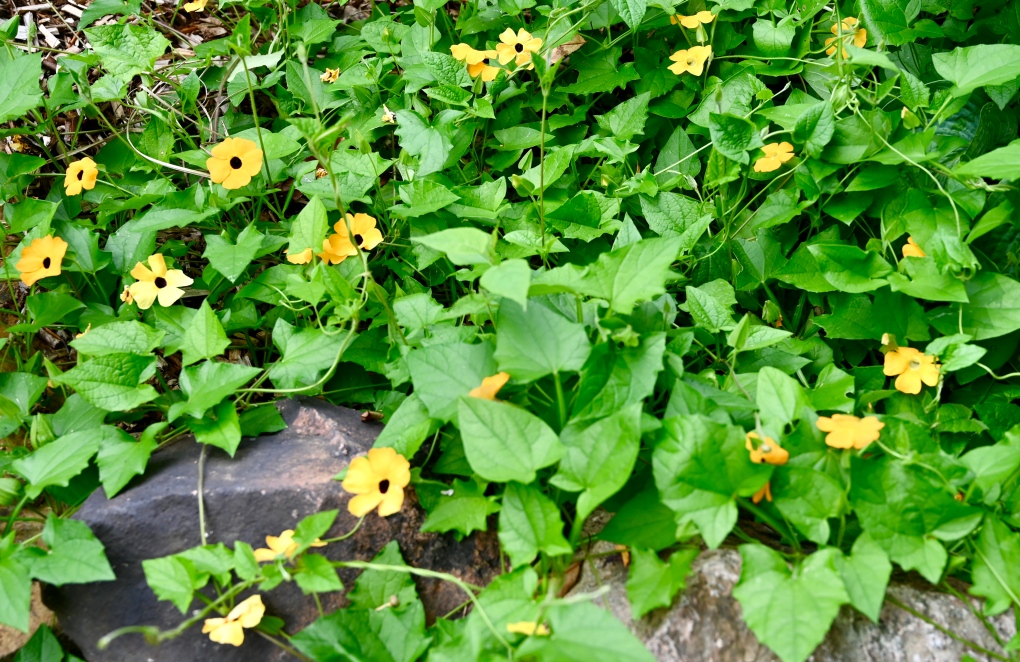 Thunbergia (Photo: Joel Haslam / CTV News Ottawa)
Thunbergia (Photo: Joel Haslam / CTV News Ottawa)
While I am sharing all of my “affordable” tips, I do spend on transplants!
Because our growing season is so condensed, I want the colour early, and I want to provide constant, and consistent, food for my flying friends.
The birds and the bees are depending on these flowers and the flowering trees.
If asked to pick favourite annuals: I have long adored cleome, zinnias, dragon-wing begonias, scaevola, geraniums and verbena. They are just so cheerful, and have become my “go- to annuals”.
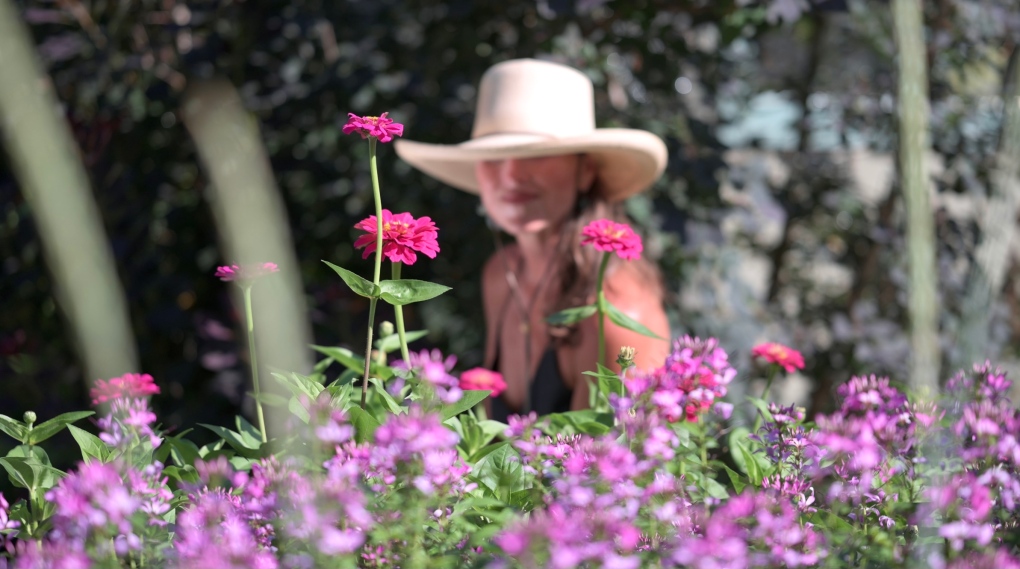 Photo: Joel Haslam / CTV News Ottawa
Photo: Joel Haslam / CTV News Ottawa
These are the main pops of colour of our hillside garden.
The bones of this garden are annuals, grasses, conifers and flowering trees.
Like the seeds that provide a powerful punch of colour per inexpensive package, with the above annuals, a few plants go a long way.
I have zinnias throughout the garden. I plant them from seed in certain areas and containers, and I plant transplants too.
When you invest in zinnias, you are essentially guaranteed bouquets of cut flowers all summer. I have already harvested about 30 bouquets. I think that’s good return on your flower dollar.
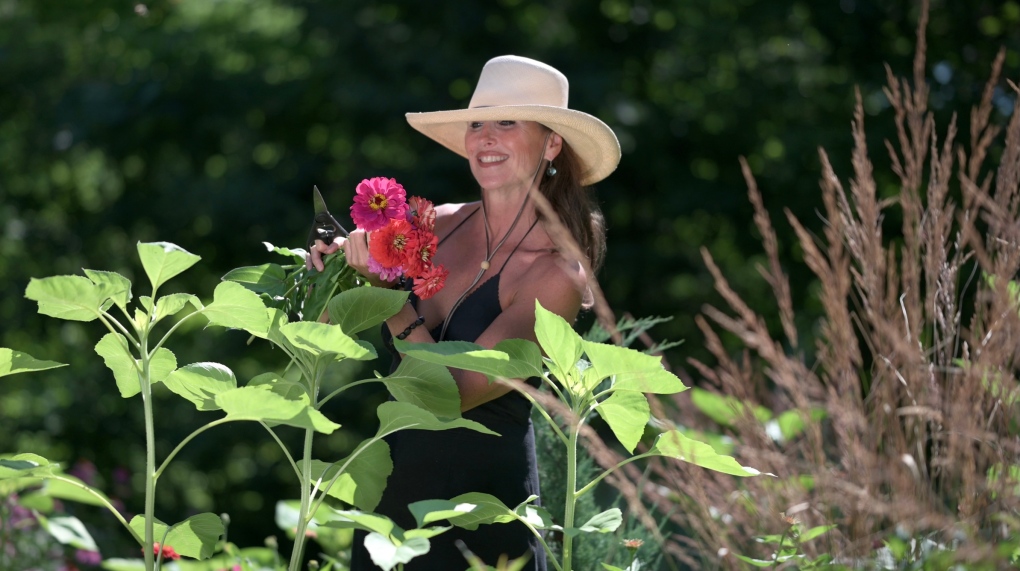 I plant transplants and I plant from seed to ensure a full season of colour and food for the pollinators. The cost of the zinnia transplants is recouped through beautiful bouquets of fresh cut flowers. (Photo credit: Joel Haslam)
I plant transplants and I plant from seed to ensure a full season of colour and food for the pollinators. The cost of the zinnia transplants is recouped through beautiful bouquets of fresh cut flowers. (Photo credit: Joel Haslam)
I plant transplants and I plant from seed to ensure a full season of colour and food for the pollinators. The cost of the zinnia transplants is recouped through beautiful bouquets of fresh cut flowers. (Photo credit: Joel Haslam)
A favourite flowering perennial friend is Echinacea. The coneflowers are long-bloomers, drought resistant, and reliable. The butterflies and hummingbirds love echinacea.
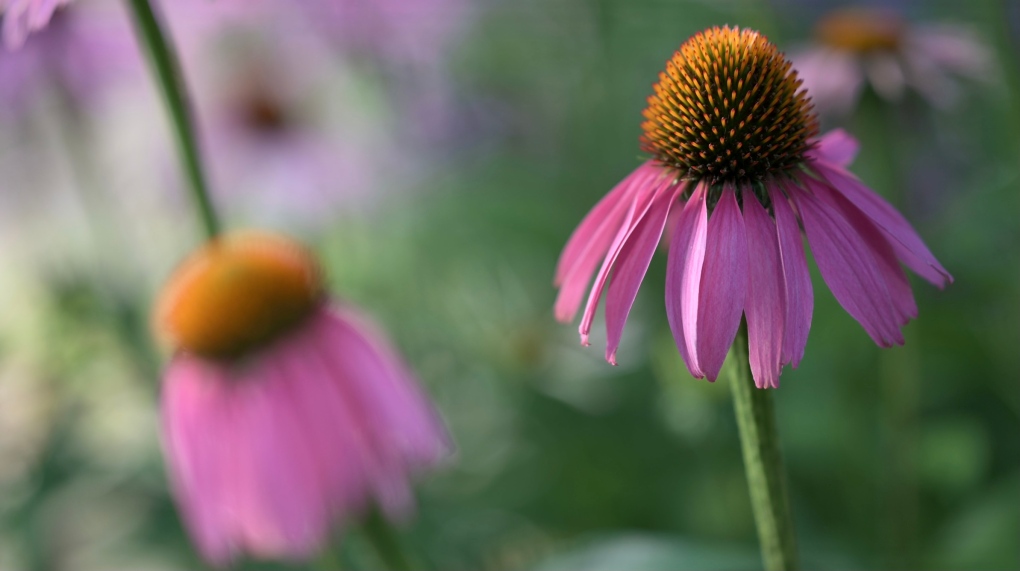 Echinacea (Photo: Joel Haslam / CTV News Ottawa)
Echinacea (Photo: Joel Haslam / CTV News Ottawa)
Tip: Harvest a few seed heads. Let them dry. To easily collect seeds put the seed heads in a coffee can and shake them loose.
Leave the rest of the plant standing though. The birds will thank you.
They say the best way to approach a garden is with a plan.
I am not that person. For me a garden is a feel-thing and trial and error has been my recipe for planting, and gardening, success.
You could call it landscape, or ‘softscape’, art. As a landscape artist, I like to paint flowers. In the summer, though, I see the soil as the canvas.
I hope these late summer examples help inspire you to affordably create your planting next season.
And while I called Joel “The King of Mulch”, my buddy, garden guru, Carson Arthur deserves that title too. Carson constantly says “all mulch is not created equal”.
If you want your garden to be healthy, choose the right mulch to go on top of the lovingly prepared and nourished soil.
Carson is also big on chickens and all that their waste can do for your plants.
Carson is the guy who encouraged this chicken to share her “low maintenance” garden escape.
CTVNews.ca Top Stories

'True when I said it, true today': former Canadian PM Harper pushes back against Trump on social media
Former prime minister Stephen Harper doesn’t find U.S. president-elect Donald Trump’s jibes about Canada becoming the 51st U.S. state very amusing.
LIVE UPDATES Uncontained L.A. wildfires are still burning. Here's the latest as firefighters battle the flames
A series of wildfires are tearing through densely populated parts of the Los Angeles, Calif. area. Five people have been reported dead. About 130,000 have been asked to evacuate. Nearly 2,000 homes and other buildings have been destroyed after the fires charred about 108 square kilometres.
NEW Tipping guide to Canada: When, where and how much to tip for restaurants, taxis and more
CTVNews.ca has created an entirely unofficial guide to tipping in Canada to help visitors, newcomers and curious Canadians navigate the shifting social norms of when, where and how much to tip.
Can the U.S. really make Canada the 51st state?
Talk of Canada becoming the 51st American state has raised an existential question on this side of the border: Could it be done? Could the maple leaf make way to the stars and stripes? According to several experts, it may be possible, but not painless.
U.S. says it has no plans to increase military presence in Greenland
The United States has no current plans to increase its military presence in Greenland, the U.S. embassy in Copenhagen said on Thursday, after President-elect Donald Trump expressed renewed interest in acquiring the vast Arctic island.
'This isn't just my mom's story,' says daughter of woman allegedly killed by partner
Abigail Robson says she moved from Nova Scotia to Alberta as a young girl with her mother 10 years ago for a fresh start.
Prince William praises his wife Kate as he wishes her a happy birthday
Prince William praised the strength of the Princess of Wales after a turbulent year, offering a 43rd birthday wish on social media on Thursday that described her as an incredible wife and mother.
How cold does it need to get before iguanas start falling out of trees in Florida?
It's a South Florida phenomenon that draws amusement from across the country — when temperatures drop below a certain level, cold-stunned iguanas start falling out of trees.
Will Toronto become Canada's most expensive housing market in 2025?
This year could be the year Toronto takes the crown for the most expensive real estate market in the country.































